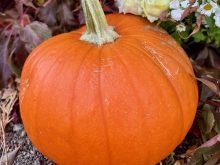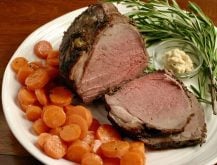For me, it has been a summer with lots of hugs.
In late June, at the passing of my dear Uncle Archie, there were hugs of support and caring. This was followed by a school reunion with “so good to see you” hugs from old classmates and friends. On one occasion, the person didn’t look like the same person last seen 40 years ago, but the hug felt like the same person. How did I remember that? Next was a surprise birthday party that my family had for me. I got a big lovable hug from just about everyone at the party.
Read Also

Intergenerational rollover rules can help succession plans
One of the most significant concerns in succession planning for farmers is the tax bill that can come with passing the farm to the next generation.
It has been a summer to remember. I hope you, too, have had a summer with lots of hugs.
Beef support
In 2004 we asked you, our readers, to send recipes for a cookbook being planned in support of the beef industry, going through the BSE crisis. The idea for this cookbook was hatched by Jeanine La Salle of Sceptre, Sask., and her mother, Kathy Russell of Eyebrow, Sask.
They received enough recipes and poems from folks in Alberta and Saskatchewan to complete the book, and have titled it Recipes From A Mad Cow. It went on sale in April 2005, and they will continue selling the book until the end of 2005.
It has more than 150 down-home recipes of all sorts, mixed with some cowboy poetry and country stories.
If you would like to order a copy of Recipes From A Mad Cow, contact: Kathy Russell, 306-759-2230 or write Box 104, Eyebrow, Sask. SOH 1L0. The books sell for $10 each, plus postage if mailed. Proceeds from the book go to the Saskatchewan Stock Grower’s Association Scholarship Fund.
Dr. Oetker recipes
Dear TEAM: I am looking for recipes using Oetker vanilla sugar or baking powder in cake or cookies. The recipes will be used for a fair. Perhaps you can help me. – M.S., Rama, Sask.
Dear M.S.: A good source for Dr. Oetker recipes is the internet, for example www.oetker.ca, www.recipesplus.ca or www.robinhood.ca. In these websites, you do a search by product (Dr. Oetker).
The Dr. Oetker company says it welcomes e-mails, phone calls or letters, whether it is to ask a question, share a comment, or to request some free recipes.
Contact the company at: Dr. Oetker Ltd., 2229 Drew Road, Mississauga, Ont. L5S 1E5, 905-678-1311, fax: 905-678-9334, e-mail: customer_service@oetker.ca.
Saskatoon berry pie filling
Dear TEAM: First let me tell you how much I enjoy your weekly columns. We have been a Western Producer subscriber for many years now and the first thing I do when we get it is turn to your page and see what is happening. I have always enjoyed all the tips, hints, recipes and poetry, and have passed on many of them.
I am looking for a recipe for making cooked saskatoon pie filling. I have some saskatoons in my deep freeze and I would like to can them for pies. Any other recipes using this prairie berry would be appreciated. Thanks for your response and I look forward to making the pie filling. -G.S., e-mail.
Dear G.S.: There is an added challenge to canning pie fillings. Most thickeners, such as cornstarch and flour, lose viscosity at the heat needed for canning. Therefore, it is recommended that a product called ClearJel starch be used.
This modified cornstarch is the secret ingredient that many commercial bakers use in their fruit pie fillings. Unlike ordinary cornstarch, ClearJel works well with acidic ingredients, tolerates high temperatures and doesn’t cause pie fillings to “weep” during storage. ClearJel is an especially good choice if you’re canning homemade pie fillings, since it doesn’t begin thickening until the liquid begins to cool.
This allows the heat to be more evenly distributed within the jar during processing. Because this is such an important safety advantage, ClearJel is the only thickener recommended for home canning.
ClearJel can be ordered from Kitchen Krafts, Box 442-ORD, Waukon, Iowa, U.S.A. 52172-0442.
It ships to Canada. You can phone in an order to 800-776-0575 or 563-535-8000. Website is www.kitchenkrafts.com. It costs approximately $3.25 for a one pound bag. All the saskatoon berry recipes in this column are from the Fruit Growers Society of Alberta. I tried them and all are good.
Saskatoon pie filling
To adapt this recipe for canning, substitute ClearJel for the tapioca or flour.
Fill jars with the hot, cooked filling and heat process for 30 minutes.
4 cups saskatoons 1 L
2 tablespoons water 30 mL
1 tablespoon 15 mL
lemon juice
2/3 cup sugar 150 mL
1/4 cup minute tapioca 60 mL
or flour
Exact proportions of fruit vary with juiciness of the saskatoons and personal preference regarding sweetness and thickness of filling.
Place berries, water and lemon juice in a saucepan.
Simmer about 10 minutes. Do not boil. You may also use the microwave to cook berries.
Add sugar and tapioca. Arrange mixture in unbaked pie shell.
Bake at 425 F (220 C) for 15 minutes, then reduce heat to 350 F (180 C) for another 30-35 minutes until juice is bubbly.
Saskatoon berry tips
- Use almond extract in recipes to bring out the nutty saskatoon flavour.
- Do not thaw berries before using. Wash in the frozen state and then proceed with the recipe.
- Never boil saskatoons with sugar. The skins will become hard and tough. Add the “boiled without sugar” berries at the end of the recipe.
- Add something acidic to your recipes to bring out the saskatoon flavour, such as lemon juice or rind, rhubarb, sour cherries.
- Saskatoon berries can be substituted in most blueberry recipes.
Saskatoon sauce
You will find dozens of ways to use this saskatoon sauce. Try it on ice cream, plain yogurt, waffles, pancakes, gingerbread, plain cakes, custard and lemon snow.
2 cups saskatoons 500 mL
1 cup water 250 mL
2 tablespoons 30 mL
cornstarch
3/4 cup sugar 175 mL
juice of one lemon
Place saskatoons in saucepan with water and bring to boil. Simmer five minutes. Blend cornstarch and sugar, add slowly to saskatoons and boil until thick and clear. Add lemon juice and cool. Makes 21/2 cups (625 mL).
Saskatoon pancakes
Add freshly picked or frozen berries to mixed pancake batter. Mix only until smooth. Cook. Top with saskatoon berry sauce.
Deep appletoon pie
Apples and saskatoons combine in this pie with no bottom crust. For a variation, add a biscuit topping instead of pastry.
3 cups sliced apples 750 mL
2 cups saskatoons 500 mL
3/4 cup sugar 175 mL
2 tablespoons flour 30 mL
2 tablespoons 30 mL
lemon juice
Slice apples and combine with saskatoons, sugar, flour and lemon juice. Place in a deep baking dish and cover with pastry. Bake in a 425 F (220 C) oven for 15 minutes and reduce to 350 F (180 C) for another 50-55 minutes.
Saskatoon meringue pie
Here is a saskatoon pie with a difference. It has a creamy mauve filling topped with a fluffy meringue. A whipped topping could replace the meringue.
1 cup water 250 mL
1 cup saskatoons 250 mL
2 tablespoons 30 mL
grated lemon rind
3/4 cup granulated 175 mL
sugar
3 tablespoons 45 mL
cornstarch
3 egg yolks
2 tablespoons 30 mL
lemon juice
2 tablespoons butter 30 mL
or margarine
Combine water, saskatoons, lemon rind, sugar and cornstarch in a heavy saucepan. Crush some of the berries to release the juice and cook over low heat until mixture is thick and clear. Add a tablespoon (15 mL) of hot mixture to beaten egg yolks, then add egg yolks to saucepan and continue cooking and stirring for five minutes.
Remove from heat and add lemon juice and butter. Pour into cooled nine inch (22 cm) pie shell and top with meringue.
Meringue
3 egg whites
4 tablespoons 60 mL
granulated sugar
Beat egg whites until frothy, then slowly add sugar and continue beating until all sugar is dissolved and meringue will stand in stiff peaks. Spread evenly on pie filling and bake in 350 F (180C) oven 15 minutes or until evenly browned. Cool before serving.
Bleached vs. unbleached
One main difference between unbleached and bleached flour is the colour; one is off white and the other is pure white.
Technically speaking, the carotenoid (yellow) pigments in the flour are oxidized to produce white flour. Flours treated with these bleaching agents must be labelled as bleached.
If a recipe doesn’t specify, you can use either one, but where a whiter colour is desired, use the bleached one. For those looking for untreated flour, note that unbleached flour can still contain maturing agents and chemical dough improvers, which should be listed on the label.














